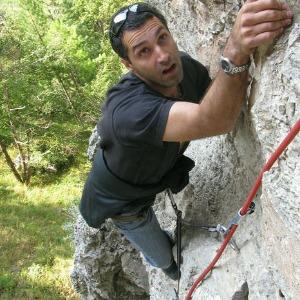
More "Living Façades" on building exteriors by Edificionado
 Aadhithya Sujith Jun 18, 2017 09:16 | Thanks for your contribution to the challenge, "Living facades" in buildings is a sustainable idea. However this idea is not new, this has been around for a long time. So to add value to the existing idea, you should consider exploring following queries. 1. How can we add "Living facades" to existing buildings at a consumer level, what are the products that users can use to grow Plants in buildings. I mean products like this. http://www.thisisinsider.com/garden-tower-2017-5 2. What changes or innovations need to be made during construction of these buildings to include living Facades. 3. What are the additional unexplored benefits it can bring to buildings and consumers. |
 Ralf Lippold Jul 7, 2017 03:10 | Dear Ben, "Living Façades" reminds me of a local startup here in Dresden called "Green City Solutions" (though at a much smaller scale, and currently bound to the urban spaces around streets and places).
Ralf |
 Ben Towne Jul 10, 2017 05:28 | Proposal contributor Dear Aadhithya and Ralf, Thank you for the links and comments. I have tried to integrate the content/responses in the proposal. I included an explanation behind the country selection. I'd be comfortable changing the selection to highlight projects going on elsewhere, as appropriate. Until a recent bugfix, I had to re-select the country fields with every small edit to any field in the proposal. |
 Maria Repetto Jul 13, 2017 10:05 | Dear Ben, I like your proposal. I think you can improve the rol of governments and their participation. They have to achieve goals as every country have been signed in Paris, so you can incluide this. I send you the link to see how Buenos Aires, capital city of Argentina, has been implemented their Climate Chage Plan 2016-2020. www.buenosaires.gob.ar Best regards, María
|
 Ben Towne Jul 14, 2017 12:12 | Proposal contributor Hi María, Best wishes, |
 Aadhithya Sujith Jul 15, 2017 09:47 | Hi Ben, Your proposal looks more comprehensive and you have done a good job with taking up inputs from the Climate colab community and refining your proposals. As you are aware "Garden House concept." is around for a long time, even ancient Egyptians used it and it is very effective. However to make your proposal innovative and stand out from the rest, I think you will have to research or come up with an innovative end product or products that will help people make these 'Living facades' easily. Garden tower for example as I mentioned earlier is one such product but there could be more products like that. Another interesting find is Organic Concrete For Living Green Facades and Hydroponic Living Walls. I hope this helps. Thanks & regards Aadhithya |
 Ralf Lippold Jul 17, 2017 06:58 | Hi Ben, @Maria, many thanks for the info on the approach Buenos Aires takes towards reaching the climate goals. |
 Christo Krastev Jul 23, 2017 04:48 | Do you have any idea what plant species will be used for landscaping facades? Best regards, land. arh. Krastev |
 Maria Repetto Aug 9, 2017 08:59 | Hi Ben, Thank you for taking into account my comments. I agree with you, but we can pull up these proposal together. I don´t know about the INDC´s related, but here you have a new link to show you how the local and national goverment can work as a team: www.buenosaires.gob.ar/noticias/la-ciudad-frente-al-cambio-climatico Thank you Ralf for your comments too! Best regards, María |
 Pia Jensen Aug 15, 2017 10:05 | Green Roofs, too! What is a Green Roof? science.howstuffworks.com/environmental/green-science/green-rooftop.htm |
 Ben Towne Aug 17, 2017 10:13 | Proposal contributor @Aadhithya Thanks for the links! The last two especially seem particularly interesting, and should be integrated with the proposal text (though I unfortunately don't have time to do that personally just now). In the first, the "garden houses" of ancient Egypt seemed to be just houses near/with a lot of gardens, where a garden was typically an enclosed area for plants. I wouldn't be completely surprised if something like this used to exist somewhere, but I still think it's a good practice that could use a lot more widespread adoption (it's currently seen as a limited or novelty kind of thing in many places), and that wider adoption could bring significant benefits. The hydroponic living walls article opens with a focus on novelty, explaining the lack of prior coverage because "technology was still being developed for vertical walls." I think that helps boost the argument for points on the "novelty" judging criteria. For only carbon absorption benefits, it's probably more cost-effective to put extra greenery in non-urban places (or to just stop burning down rainforests etc. to make room for e.g. grazing land), than to put that extra plant matter on or around buildings. However, putting these extra plants on the sides of buildings especially in dense urban cores has many stronger benefits that are more direct to the people (and other species) living there, as outlined in the proposal (e.g. air quality, noise reduction, lower stress, better physical & mental health, etc.). Further, getting people more mentally connected to and aware of the importance of the natural world can help shift individual actions and build political will for collective actions that have a larger impact on climate. Thanks for your support! P.S.: I do not plan on running social media campaigns during the voting period - so if you want to see the proposal do well in "People's Choice," mark your calendar to spread the word! |
 Pia Jensen Aug 17, 2017 11:06 | Good, I missed that note. At least it is there. I'll just say this: Bonus points for green roofs is they provide security from UV breakdown roof material, can be adapted to capture and filter rainwater runoff, reduce pollution, raise property value, and, among other things, reduces urban heat island effect. Green Roof Benefits https://www.nps.gov/tps/sustainability/new-technology/green-roofs/benefits.htm I have friends preparing to put a green roof on their house here in Uruguay and I wish I could do the same but the pitch is very steep and I'm just a renter. Glad to see your proposal here! |
 Ben Towne Aug 26, 2017 09:38 | Proposal contributor As an update, I have integrated content from those two articles as planned & noted in prior comments. Thanks again to all who support and comment helpfully on the proposal! |
 Teerth Brahmbhatt Aug 27, 2017 06:55 | Dear Ben Towne, Great work on taking feedback and building a comprehensive proposal for this fantastic idea. There is one area that I feel could be improved upon. The government stakeholder piece could be buffered with a policy implementation recommendation. I have a colleague that has launched a company known as magnolia land partners they are working in multiple regions around the country within environmental markets established to allow different stakeholders to offset their negative environmental impact. These markets are run by the USDA. There doesn't seem to be much for an urban air pollution offset using living facades or other green offsets, it may be worth doing some research into whether or not these markets have been established in other countries and incorporating a plan of action for municipalities and states to set these up here in the US. keep up the great work!
Best Regards,
Teerth Brahmbhatt
|
 Pia Jensen Aug 31, 2017 10:24 | Ben - If you want to add technology to the mix, to monitor and assess the success of the green walls/roofs - you might want to see Radu Motisan's creations - The portable environmental monitor project or the uRADMonitor Model D https://www.uradmonitor.com/hackaday-prize-2015-best-product-finals/ and Model D https://www.uradmonitor.com/model-d-production-ready/ |
 Drew Depriest Oct 13, 2017 10:31 | Adding to Pia's comment about adding technology - there's a startup based in Chicago called Sagegreenlife that designs and installs living walls for interior as well as exterior use. They leverage sensing technology to assist with ongoing maintenance. It's an exciting time to see what's entirely possible for implementing biophilia-driven designs infused with technology. The "ongoing maintenance and support" piece would be a risk I'd look at for long-term viability. How difficult (and costly) will an exterior living wall be to maintain? |